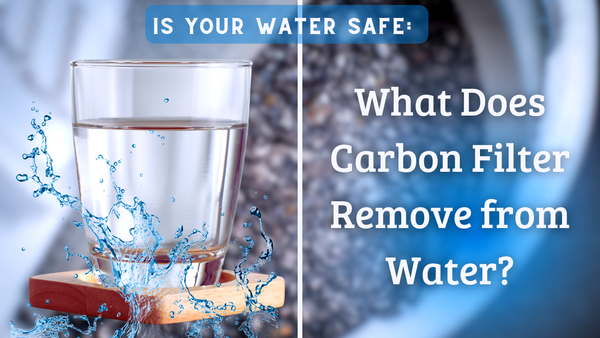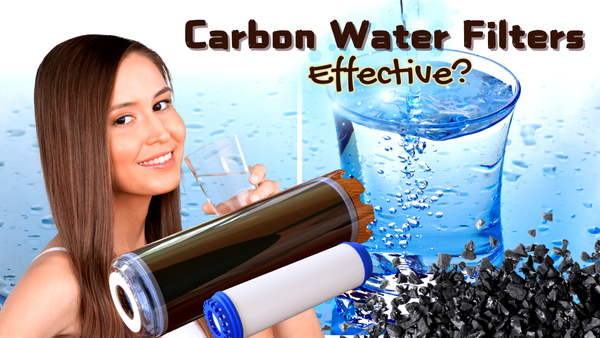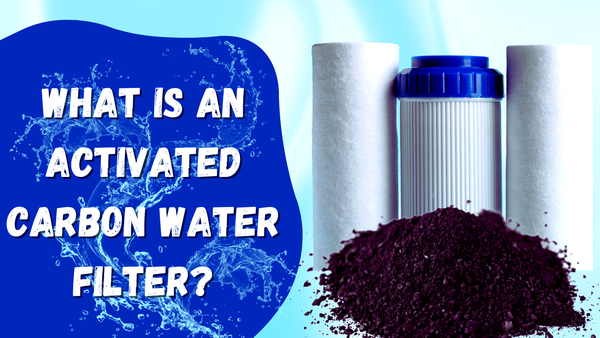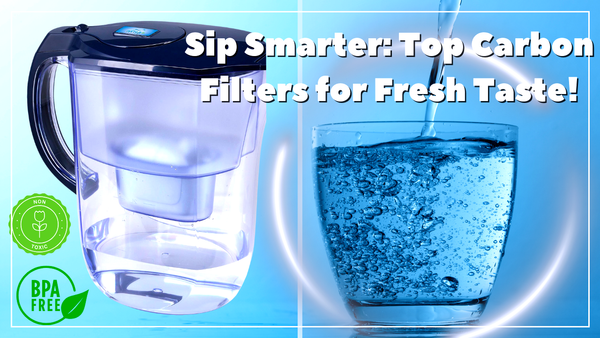Key Takeaways:
- Activated carbon filters are highly effective in removing impurities and contaminants from water.
- Different forms of activated carbon, such as granular and block, offer various benefits for water filtration.
- Regular maintenance and understanding of the filtration process are crucial for optimal performance.
Activated carbon is a form of carbon processed with tiny, low-volume pores that increase the surface area available for adsorption or chemical reactions. It's often made from coconut shells, wood, or coal. Activated carbon's large surface area makes it incredibly effective at trapping contaminants.
Activated carbon is a powerhouse in the water filtration world. It's like the Swiss Army knife of water treatment, capable of tackling a wide range of contaminants. But how does it work, and how can you use it to ensure your water is as clean as a whistle? Let's dive in.

What is Activated Carbon?
Activated carbon is a form of carbon processed to have small, low-volume pores that increase the surface area available for adsorption or chemical reactions. It's often made from coconut shells, wood, or coal. The large surface area of activated carbon makes it incredibly effective at trapping contaminants.
How Activated Carbon Filters Work
Activated carbon filters work through adsorption, where contaminants adhere to the surface of the carbon. When water passes through the activated carbon filter, impurities like chlorine, organic compounds, and certain heavy metals are trapped, leaving you with cleaner water. Additionally, activated carbon can facilitate chemical reactions, promoting the chemical transformations of these impurities through catalytic activity, thereby enhancing the effectiveness of water filtration.
Types of Activated Carbon Filters
There are two types of activated carbon filters: granular activated carbon (GAC) and activated carbon block filters. GAC filters consist of loose granules of carbon, while carbon block filters are made from compressed carbon. Each has its benefits and is suited for different applications.

Granular Activated Carbon (GAC) Filters
GAC filters are commonly used in point-of-use and point-of-entry water filtration systems. They are effective at removing chlorine, organic chemicals, and other contaminants. The loose granules allow for a higher flow rate, making them ideal for whole-house filtration systems.
Activated Carbon Block Filters
Activated carbon block filters are made by compressing carbon into a solid block. This increases the contact time between the water and the carbon, making the filter better at removing impurities. These are used in drinking water systems and can remove smaller particles and certain bacteria.
Benefits of Using Activated Carbon Filters
Activated carbon filters have many benefits. They remove chlorine and other chemicals from water, improving its taste and odor. They also reduce levels of organic contaminants, heavy metals, and other bad stuff, making it safer to drink. It is important to maintain and replace the filters regularly to ensure the safety and cleanliness of filtered water.
How to Install an Activated Carbon Filter
Installing an activated carbon filter is easy. First, choose the right filter for your needs. Then, follow the manufacturer’s instructions to install the filter in your water system. Make sure all connections are tight to prevent leaks.
Maintenance of Activated Carbon Filters
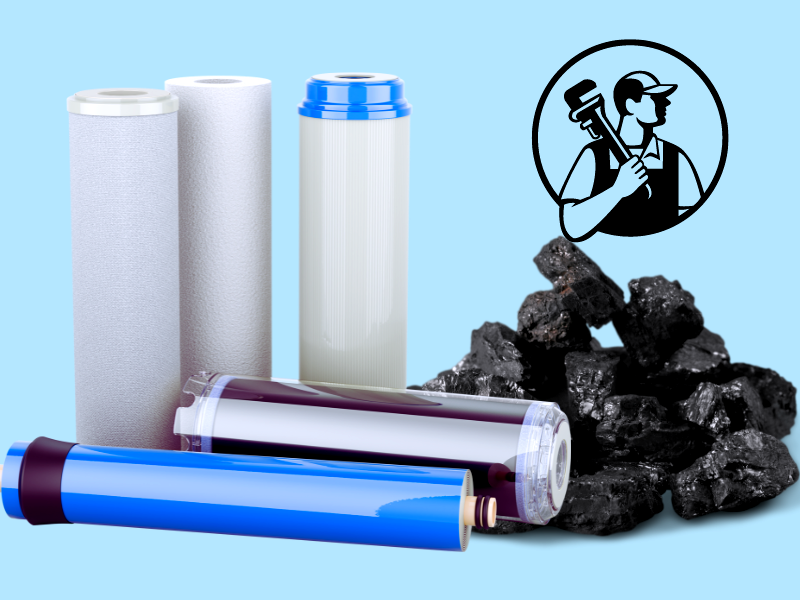
Maintenance is critical to keeping your activated carbon filter working. This means replacing the filter cartridge as recommended by the manufacturer. Over time, the carbon becomes saturated with impurities and loses effectiveness, so timely replacement is important.
Activated Carbon in Reverse Osmosis Systems
Carbon filtration is often integrated into reverse osmosis systems to protect the membrane and enhance overall water quality. In these systems, the activated carbon filter removes chlorine and other chemicals that can damage the reverse osmosis membrane. This combo is a complete water treatment solution.
Activated Carbon and Ion Exchange
Activated carbon filters can also be used with ion exchange resins. While activated carbon removes organic impurities and chlorine, ion exchange resins are good at removing dissolved ions like calcium and magnesium that cause water hardness.
Activated Carbon and Catalytic Carbon
Catalytic carbon is a type of activated carbon that has been treated to make it more reactive. It can facilitate chemical reactions, promoting the transformation of impurities and enhancing the effectiveness of water filtration. It’s good at removing chloramines and hydrogen sulfide from water, making it a nice addition to water treatment systems.
Activated Carbon and Total Dissolved Solids (TDS)
While activated carbon filters are effective at removing organic compounds and certain impurities, they are not effective at reducing total dissolved solids (TDS). For that, you need a reverse osmosis system or other specialized filtration method.
Activated Carbon and Pore Size Distribution
The effectiveness of an activated carbon filter depends on its pore size distribution. Filters with multiple pore sizes can trap various impurities. Smaller pores are good at removing smaller particles; larger pores can trap more significant impurities.
Activated Carbon and Water Flow
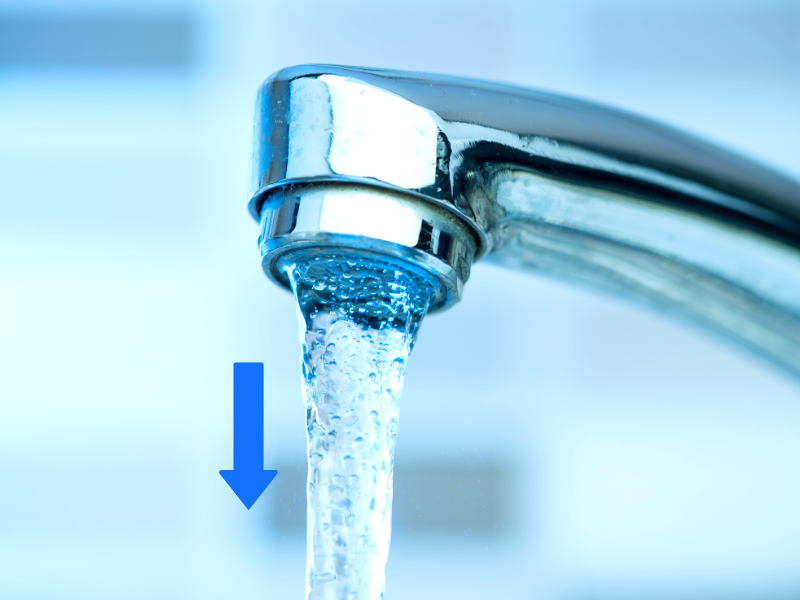
The flow rate of water through an activated carbon filter affects its performance. A slower flow rate gives more contact time between the water and the carbon, making the filter better at removing impurities. But a flow rate that’s too slow can reduce overall water pressure.
Activated Carbon and Physical Properties
The physical properties of activated carbon, such as its surface area and pore structure, play a crucial role in its effectiveness. High-quality activated carbon with a large surface area and well-distributed pores can adsorb more contaminants, providing better filtration.
Activated Carbon from Coconut Shells
Activated carbon made from coconut shells is highly effective due to its high surface area and microporous structure. It is also a renewable resource, making it an environmentally friendly option for water filtration.
Activated Carbon and Water Treatment Methods
Activated carbon is used in various water treatment methods, including point-of-use filters, whole-house systems, and municipal water treatment plants. Its versatility and effectiveness make it a popular choice for improving water quality.
Activated Carbon and Filtration Systems
Activated carbon filters are an integral part of many water filtration systems. They can be used as standalone filters or in combination with other filtration technologies, such as reverse osmosis and ion exchange, to provide comprehensive water treatment.
Activated Carbon and Drinking Water

Using activated carbon filters for drinking water is a common practice. These filters remove chlorine, organic compounds, and other contaminants that can affect the taste and safety of drinking water. They are often used in countertop and under-sink filtration systems.
Activated Carbon and Water Purification
Activated carbon is a key component in water purification processes. It removes impurities and contaminants, resulting in purified water that is safe for consumption. This makes it an essential tool in both residential and commercial water treatment.
Activated Carbon and Municipal Water Treatment
Municipal water treatment plants often use activated carbon to remove contaminants from the water supply. This helps ensure that the water delivered to homes and businesses is safe and clean. Activated carbon is effective at removing chlorine, organic compounds, and other harmful substances.
Activated Carbon and Pore Size
The pore size of activated carbon affects its ability to remove contaminants. Filters with smaller pores can trap smaller particles, while those with larger pores can capture larger contaminants. A combination of different pore sizes provides comprehensive filtration.
Activated Carbon and Water Flow Rate
The flow rate of water through an activated carbon filter is an important factor in its performance. A slower flow rate allows for more contact time between the water and the carbon, improving the filter's ability to remove contaminants. However, too slow a flow rate can reduce the overall water pressure.
Activated Carbon and Physical Properties
The physical properties of activated carbon, such as its surface area and pore structure, play a crucial role in its effectiveness. High-quality activated carbon with a large surface area and well-distributed pores can adsorb more contaminants, providing better filtration.
Summary
Carbon filters are a great way to make your water cleaner and safer to drink. They work by trapping harmful chemicals and pollutants, but they need regular care to keep working well. Whether you use a granular filter or a block filter, knowing how they work and keeping them in good shape is super important. Want to learn how to get the best results from your water filter? Explore how to keep your water fresh and pure! Keep up with the latest water filter tips and offers, and subscribe to our newsletter today!
FAQ
How often should I replace my activated carbon filter?
Replacement frequency depends on the type of filter and the level of impurities in your water. Generally replaced every 6 to 12 months. Follow the manufacturer’s guidelines for best results.
Can activated carbon filters remove heavy metals?
Activated carbon can remove some heavy metals but is not as effective as other filtration methods like reverse osmosis or ion exchange. For heavy metal removal, consider using a combination of filtration technologies.
Is activated carbon safe for drinking water?
Yes, activated carbon is safe for drinking water. It removes impurities that can affect the taste and safety of water. But always replace the filter regularly to make sure it still works well.




